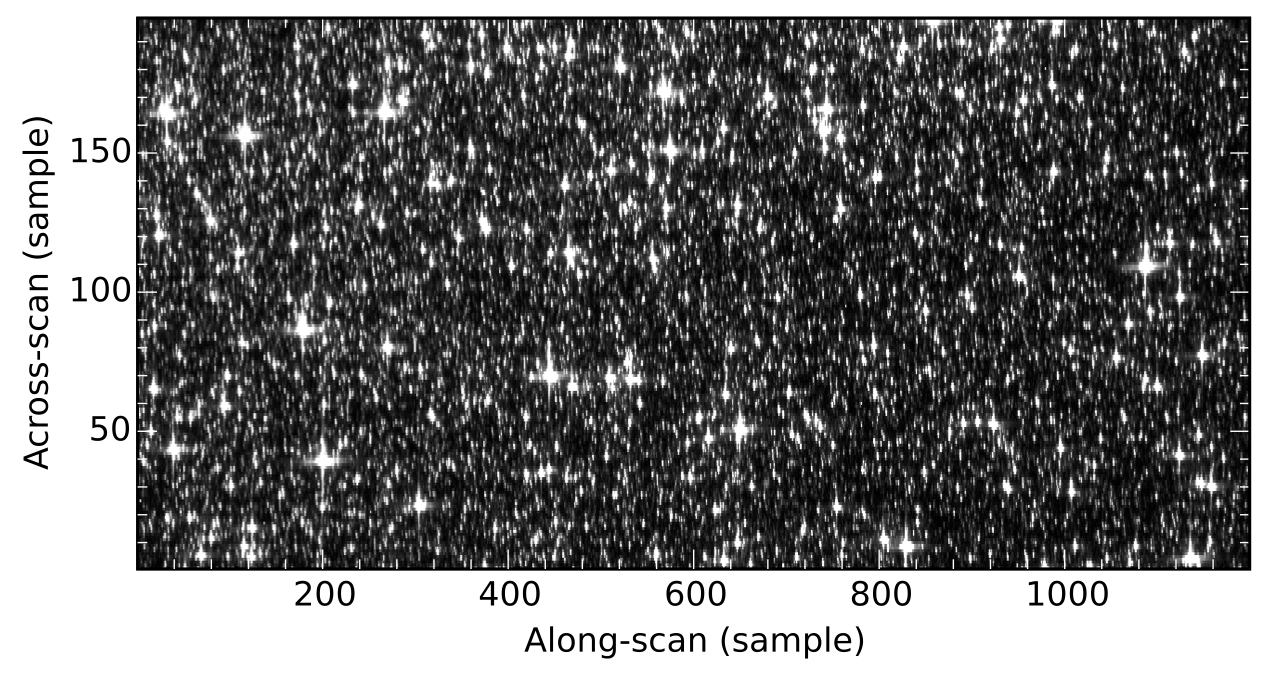|
As Gaia scans the skies, the satellite's on-board systems ensure that stellar objects with magnitudes brighter than G~20.7 are being observed and that the corresponding data are collected and downlinked for on-ground processing. This scheme results in a complete census of stars up to the magnitude limit of about G=20 in almost all regions of the sky, which will make groundbreaking new scientific investigations possible, starting with the first Gaia data release expected at the end of this summer.
In two of the most dense stellar regions of the sky, the globular cluster Omega Cen and Baade's window, however, Gaia cannot observe all stars that enter its field of view in the usual way. When Gaia sweeps across these regions, which have projected stellar densities orders of magnitude higher than the average sky, the on-board software reaches the limit of available resources, with the result that some stars are not observed even when bright enough for Gaia. This partial incompleteness occurs only in small regions and is further mitigated by the fact that Gaia repeatedly observes the same region over the mission lifetime in different scan directions leading to different stars being observed at different occasions. Nevertheless, these two regions are scientifically important enough that an additional measure is being taken.
When Gaia observes Omega Cen or Baade's window, a special functionality is enabled in which several seconds of full-frame data of the Sky-Mapper CCDs are stored and downlinked. These images have fixed exposure time and lower spatial resolution than nominal Gaia observations taken with the astrometric CCDs, but they are not affected by the limit in on-board resources. Preliminary analyses of such images and comparison with the nominally collected data showed that using the full-frame image will help to enhance Gaia's results in these particular regions.
These images have therefore been collected since the start of Gaia's nominal mission. An example is Figure 1 which shows the central region of the globular cluster Omega Cen. It was taken in August 2015 with one Sky-Mapper CCD and 2.85 seconds of exposure time. It took Gaia 11.8 seconds to acquire the image while it was scanning along the horizontal axis from left to right in the image. The vertical extent corresponds to the width of one Gaia CCD and the image covers 11.8' x 5.8'. For this display, the rectangular shape of Gaia's samples was compensated by stretching the vertical axis by a factor of 3, i.e. the image samples appear in their correct shape on the sky. Thus the cluster core is shown in its true circular shape. The raw data have been binned to fit the core of the cluster into a single picture.
Figure 2 below shows a small section of Omega Cen at full resolution of the Sky-Mapper which involves binning of 2 by 2 pixels into samples on-board before transmission.
|








































 Sign in
Sign in
 Science & Technology
Science & Technology


